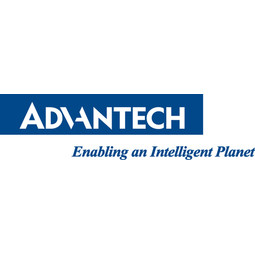公司规模
Mid-size Company
地区
- America
国家
- Peru
产品
- TREK-723 mobile data terminal
- SGF-designed CAN bus-based reading module
技术栈
- GPS
- CDMA/GPRS/HSPA+
- Wi-Fi
- IEEE 802.11 a/b/g/n
- Glonass
实施规模
- Enterprise-wide Deployment
影响指标
- Cost Savings
- Productivity Improvements
- Customer Satisfaction
技术
- 传感器 - 全球定位系统
- 网络与连接 - 蜂窝
适用行业
- 城市与自治市
- 回收与废物管理
适用功能
- 物流运输
- 维护
用例
- 车队管理
- 实时定位系统 (RTLS)
- 车载远程信息处理
服务
- 系统集成
- 硬件设计与工程服务
关于客户
SGF 成立于 1988 年,总部位于秘鲁,是一家车队管理系统供应商。在嵌入式电子行业尚处于萌芽阶段时,SGF 开发了第一台车载计算机。SGF 现在是一家硬件制造商,开发用于运输和自动化应用的主板。利马市的一位客户正在寻找 SI 来实施车队管理解决方案,以促进该市的垃圾车车队监控和废物管理运营。他们需要一种车载解决方案,可以监控车辆移动、诊断以及至关重要的驾驶员行为。在咨询了众多供应商后,他们选择与研华合作。这是因为研华提供了全面的灵活解决方案,可以在其专家工程师团队的支持下根据特定需求快速定制。
挑战
利马市正在寻找一种车队管理解决方案,以方便该市的垃圾车车队监控和废物管理运营。他们需要一种车载解决方案,可以监控车辆移动、诊断以及至关重要的驾驶员行为。客户需要能够记录驾驶员行为和路线,以确保符合城市安全法规。系统的电源、抗震性和核心温度范围应适合在恶劣环境下运行。车载计算机应符合几个特殊要求。例如,较旧的卡车往往电源不稳定、噪音过大、电压不足,这会妨碍系统激活。当连接到外围设备时,突然的电压浪涌可能会损坏主板,颠簸的道路可能会导致断电或计算机故障。此外,没有宽工作温度范围的系统无法在极热或极冷的天气下持续运行。
解决方案
SGF 采用研华 TREK-723 移动数据终端 (MDT) 来管理移动车队资产和驾驶员行为。TREK723 MDT 配备内置 GPS 和 CDMA/GPRS/HSPA+,使驾驶员和调度员能够保持持续通信,并可用于监控里程、路线、速度、加速度、制动、油压和油耗等数据。客户需要的一项重要附加功能是能够记录驾驶员行为和路线,以确保符合城市安全法规。研华的 MDT 与 SGF 专门开发的读取设备集成,以减少繁琐的手动记录和跟踪,实现更明智的管理,从而提高废物管理的安全性和效率。研华系统不仅通过先进而坚固的车载硬件技术消除了这些可能性,而且还将智能软件收集的复杂数据转化为有用的信息。
运营影响

Case Study missing?
Start adding your own!
Register with your work email and create a new case study profile for your business.
相关案例.

Case Study
Turning A Stadium Into A Smart Building
Honeywell created what it called the “intelligent system” for the National Stadium in Beijing, China, turning the venue for the opening and closing events at the 2008 Summer Olympics into a “smart building.” Designed by highly controversial artist Ai Weiwei, the “Bird’s Nest” remains one of the most impressive feats of stadium architecture in the world. The 250,000 square meter structure housed more than 100,000 athletes and spectators at a time. To accommodate such capacity, China turned to Honeywell’s EBI Integrated Building Management System to create an integrated “intelligent system” for improved building security, safety and energy efficiency.
.png)
Case Study
Smart Street Light Network (Copenhagen)
Key stakeholders are taking a comprehensive approach to rethinking smart city innovation. City leaders have collaborated through partnerships involving government, research institutions and solution providers. The Copenhagen Solutions Lab is one of the leading organizations at the forefront of this movement. By bringing together manufacturers with municipal buyers, the Copenhagen Solutions Lab has catalyzed the development and deployment of next-generation smart city innovations. Copenhagen is leveraging this unique approach to accelerate the implementation of smart city solutions. One of the primary focus areas is LED street lighting.

Case Study
Buoy Status Monitoring with LoRa
The Netherlands are well-known for their inland waterways, canals, sluices and of course port activities. The Dutch Ministry of Infrastructure indicates that there are thousands of buoys and fixed items in and near water environments that would profit from IoT monitoring. One of the problems with buoys for example, is that they get hit by ships and the anchor cable breaks. Without connectivity, it takes quite some time to find out that something has happened with that buoy. Not to mention the costs of renting a boat to go to the buoy to fix it. Another important issue, is that there is no real-time monitoring of the buoys at this moment. Only by physically visiting the object on the water, one gains insight in its status.

Case Study
Barcelona Case Study
Barcelona’s heavy traffic and its associated high levels of pollution were the primary factors that motivated some companies and universities to work on strategies for improving traffic in the city centre. Bitcarrier is one of the technologies involved in the In4Mo Project, whose main objective is to develop the applications that form the core of smart mobility, one of the fundamental pillars of the smart city concept.

Case Study
China Mobile Smart Parking
Smart Parking, powered by NB-IoT technology, is making it easier for drivers to find free parking spots. Cities can better manage their parking assets and maximize the revenue available to them as a result. Drivers searching for parking create congestion and pollution by circling and hunting for available parking. Smart Parking services are able to significantly ease these problems by guiding a driver directly to a parking space.








